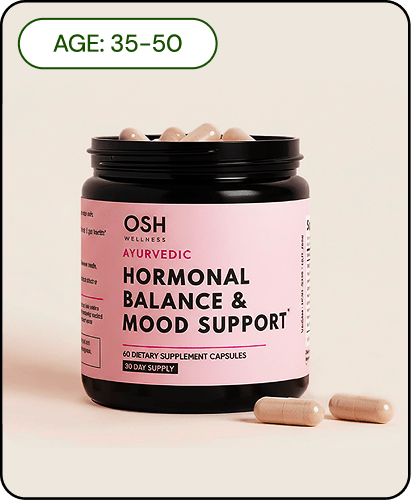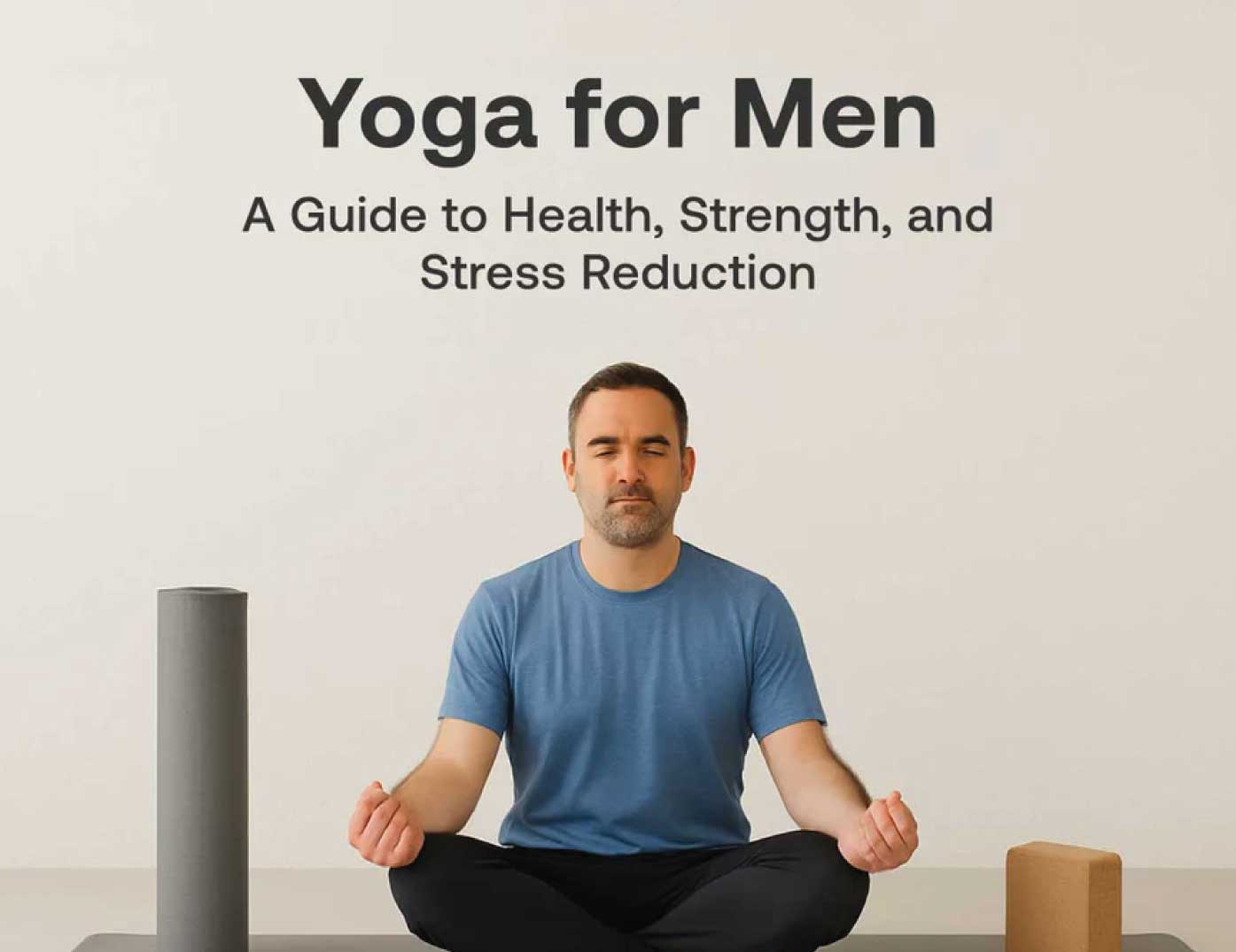Table of contents
Yoga has emerged as an invaluable tool for men seeking to navigate the complexities of modern life. Amidst increasing stress, the need for enhanced flexibility, and the pursuit of better sleep, yoga offers a remedy specifically suited to male wellness. This article explores how yoga not only supports mental clarity and productivity but also fosters physical strength and emotional resilience . Discover the multifaceted benefits of incorporating yoga into your lifestyle and why it is an essential practice for modern men aged 30-55.
Understanding Yoga’s Importance for Modern Men

Yoga has gained traction among men in contemporary society, especially about health, stress management, and sexual wellness. Notably, in 2022, approximately 31.8% of male yoga practitioners reported using yoga specifically for pain management, more than the 27.5% of female practitioners, signaling a growing awareness of yoga's physical health benefits in men aged 30–55 [1].
Beyond pain relief, yoga has been shown to enhance mental well-being. Research indicates that yoga promotes mindfulness and lowers blood pressure, serving as an effective strategy for managing stress [2]. In a time of escalating daily pressures, this makes yoga a critical tool for men's mental health.
There's also a noteworthy connection between yoga and sexual wellness. Improved flexibility, better blood flow, and the mindfulness gained through yoga can lead to enhanced sexual health and satisfaction.[3]
The broader landscape also supports this movement: 80% of yoga practitioners use it for overall health restoration, while 77% of men report increased physical strength and 82% mention reduced inflammation [4].
These insights make it evident that yoga is far more than physical exercise. It is a holistic approach that bolsters men's comprehensive well-being.
Historical Context and Modern Adaptations of Yoga

Yoga’s origins span over 5,000 years, tracing back to ancient India with early mentions in sacred texts like the Rig Veda. Over time, it evolved through the Vedic period, influenced by Hinduism, Buddhism, and Jainism. Seminal texts such as the Upanishads and Patanjali’s Sutras shaped the philosophy and structure of the practice [5].
In the 19th and 20th centuries, yoga transitioned into the Western world, where it rapidly evolved into a practice focused more on physical health and general well-being rather than spirituality [6].
Modern yoga emphasizes physical postures (asanas), breathwork, and mindfulness, often separated from its spiritual beginnings [7]. These physical and mental elements together contribute to marked improvements in both emotional resilience and physical well-being [8][9].
Yoga’s historical journey reflects its adaptability, ensuring that it resonates with modern practitioners seeking comprehensive health benefits.
How Yoga Alleviates Stress and Promotes Relaxation

Yoga is a powerful tool for chronic stress relief and emotional regulation. It achieves this by recalibrating the autonomic nervous system (ANS) and the HPA axis, critical in managing the body's stress response [10].
By activating the parasympathetic nervous system, yoga triggers a “rest and digest” response, which effectively reduces heart rate, lowers blood pressure, and cultivates calm [11]. Studies also confirm that yoga lowers cortisol levels and systemic inflammation, which are directly linked to chronic stress [12].
Breathing techniques like Pranayama further support relaxation by improving brain oxygenation and relaxing muscles [13]. These methods, when paired with cultivated mindfulness, allow individuals to pause negative thought cycles and build emotional resilience [14].
Incorporating yoga into daily life enhances emotional stability and prepares the body to manage conditions such as anxiety and chronic pain effectively.
Improving Sleep Quality Through Yoga Practices

One often overlooked benefit of yoga is its ability to enhance sleep quality. Studies have found that yoga practices significantly improve sleep metrics such as the Pittsburgh Sleep Quality Index (PSQI), especially in high-stress populations like college students [15].
Yoga improves sleep through multiple mechanisms:
Reduces rumination and anxiety through mindfulness
Promotes melatonin production for better circadian regulation [17]
Involves gentle physical activity that enhances sleep hygiene
Yoga poses suitable for pre-sleep relaxation include:
Supta Baddha Konasana (Reclined Bound Angle Pose)
Viparita Karani (Legs-Up-the-Wall Pose)
Adding yoga to a nighttime routine offers men a natural path to restorative sleep and overall nightly recovery [16].
Building Physical Strength and Stability Through Yoga

Yoga is increasingly adopted by athletes and fitness enthusiasts for its enhancing effects on strength, balance, and mobility. It fortifies stabilizing muscles and supports superior postural alignment, which are vital for athletic performance and injury prevention [18].
Regular yoga practice improves flexibility in key areas such as:
Hamstrings
Shoulders
Hips
This improved flexibility enhances range of motion and reduces injury risk [19]. Athletes often report faster muscle recovery and improved concentration when yoga is included in their training [20.
Effective poses to build core strength and awareness include:
Plank
Warrior I and II
Downward Dog
Pigeon Pose
Incorporating yoga into strength routines empowers men, enabling optimal performance and athletic longevity [21].
Relevant Products
An excellent addition to men's holistic health is the Osh Wellness Men's Fertility Support supplement . When paired with a consistent yoga practice, this supplement helps support reproductive health, promote vitality, and enhance overall wellness.
Conclusions
Integrating yoga into one’s lifestyle offers a wide range of benefits for men. From managing chronic stress and enhancing physical fitness to improving sleep quality and mental clarity, yoga is a practical, science-backed approach to holistic health. For men aged 30–55 seeking resilience, vitality, and well-being, yoga offers a sustainable and rewarding path forward.
FAQs
What types of yoga are best for stress relief
Hatha, Yin, and Restorative yoga are excellent for lowering stress and promoting relaxation.
How often should men practice yoga?
Practicing 3–5 times a week yields optimal physical and mental benefits.
Can yoga help with sleep issues?
Yes, consistent practice improves sleep quality through relaxation and mindfulness.
What are the physical benefits of yoga for men?
Increased flexibility, core strength, balance, and injury prevention.
How can beginners start their yoga journey ?
Start with basic beginner classes in-person or online, focusing on breath and foundational poses.
Sources
1: CDC - Prevalence and Characteristics of Yoga Use among Adults in the United States, 2022
2: Harvard Health - Yoga: Benefits Beyond the Mat
3: NCCIH - Yoga: Effectiveness and Safety
4: Yoga Earth - Yoga Statistics
5: Yoga Kulam - Chronology of Yoga
6: The Whole U - The Westernization of Yoga
9: Google Arts & Culture - Explore the Ancient Roots of Yoga
10: PubMed - Physiological Mechanisms of Yoga
11: Frontiers in Psychiatry - Yoga and Stress Reduction
12: Wiley Online Library - The Impact of Yoga on Stress
13: Stanford Longevity Center - How Yoga Affects the Brain and Body
14: UConn - How Does Yoga Reduce Stress?
15: University of Kentucky - Study on Yoga and Sleep Quality
16: Sleep Foundation - Yoga and Sleep
17: PAR Access - Yoga Can Help Sleep Disorders
18: Sporting Bounce - Yoga and Athletic Performance
19: Duke University - The Role of Yoga in Endurance Training
21: Explosive Whey - Yoga to Improve Flexibility and Strength







